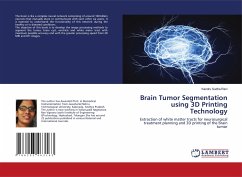
Brain Mapping using CPPG
Versandkostenfrei!
Versandfertig in 6-10 Tagen
51,99 €
inkl. MwSt.

PAYBACK Punkte
26 °P sammeln!
Functional Near Infrared Spectroscopy is the non invasive optical technique for measurement of neural activity and hemodynamic response that has a potential for brain mapping. In fMRI the gold standard for brain mapping is BOLD signal. This research aims to develop a system to capture the cranial PPG (CPPG) using infrared (IR) source (860nm) and detector (OPT 101). AC excitation for the IR source in the range of 1 to 2 MHz plays major role in the CPPG sensor. Brain functional activity in prefrontal lobe is detected by placing the sensor on the forehead. The CPPG signal is captured with eyes op...
Functional Near Infrared Spectroscopy is the non invasive optical technique for measurement of neural activity and hemodynamic response that has a potential for brain mapping. In fMRI the gold standard for brain mapping is BOLD signal. This research aims to develop a system to capture the cranial PPG (CPPG) using infrared (IR) source (860nm) and detector (OPT 101). AC excitation for the IR source in the range of 1 to 2 MHz plays major role in the CPPG sensor. Brain functional activity in prefrontal lobe is detected by placing the sensor on the forehead. The CPPG signal is captured with eyes open (EO) and eye blinking (EB) activity and for various emotions (Happy and Sad). A six level wavelet decomposition of CPPG signal is performed using Daubechies 9 and statistical features are calculated.The CPPG signals for happy and sad emotions are decomposed using wavelet transform to di erent wavelet sub-bands based on their frequency content. Emotions alter the covariance structures of multivariate matrices at di erent scales and the corresponding Eigen values.












